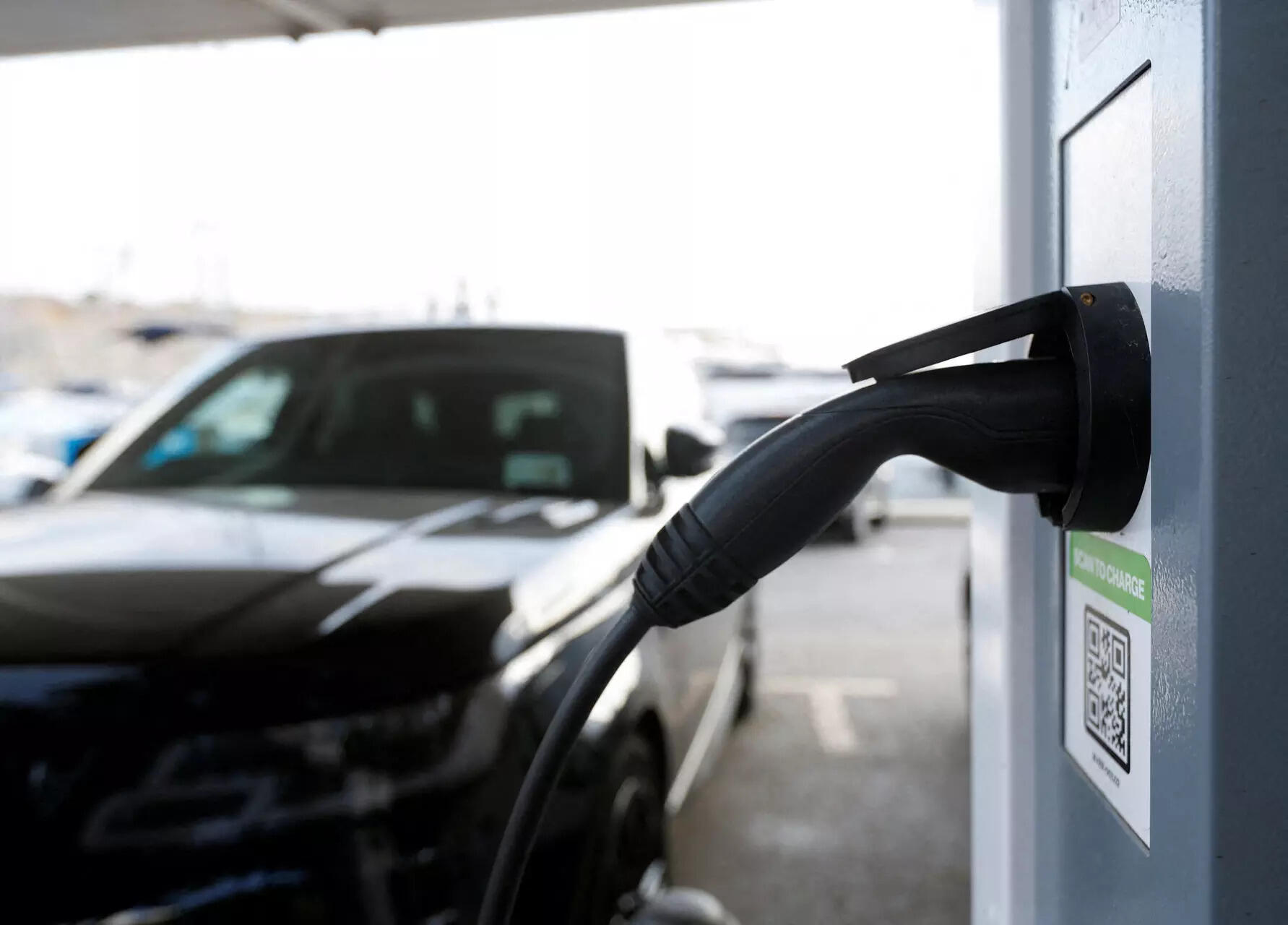
Nations, all over the world, are facing severe damage from climate change caused by the rising average temperature of the earth. To mitigate climate change, 197 countries have signed the Paris Accord. The objective of this accord is to curb emissions of Greenhouse Gases (GHGs), Carbon Dioxide (CO2) being the major constituent.
The control in GHG emission is intended to keep the average temperature rise under 1.5°C. Meeting this ambitious goal of temperature control requires both behavioural change and adoption of new technologies in every walk of life. The major sectors emitting GHG are energy, transport, agriculture, industry, building, land use & forestry and waste.
According to the International Energy Agency (IEA), the transport sector contributes approximately 14% to 23% of global anthropogenic GHG emissions. This includes emissions from road transport (cars, trucks, buses), aviation, shipping, and rail. Out of these, road transport has the highest emission of GHG.
The contribution of emissions from the transport sector to total greenhouse gas (GHG) emissions varies by country and region. Many countries like China, Canada, Germany, Finland, France, India, Japan, Mexico, Netherlands, Norway, Sweden, the United Kingdom (UK) and the United States have been pursuing a policy for road transport that calls for its electrification. Mass adoption of EVs is being pursued by policy makers.
The policy is not only to bring new EVs into market but also to curb sale of Internal Combustion Engine Vehicles (ICEVs) and even replace existing ICE powered vehicles. India has set a target to replace all internal combustion engine (ICE) vehicles with electric vehicles (EVs) by the year 2030. Worldwide, such government led policy initiatives have catalysed EV production and sales which are rising exponentially.
Because of such policies, the automotive industry globally has been experiencing a significant shift in their activities; production and sales of electric vehicles (EVs) going up and ICE powered vehicles going down. EVs are supposed to be a potential solution for mitigating the environmental impacts including temperature rise due to reduction in GHG emission that the operation of traditional internal combustion engine (ICE) vehicles results in.
Some environmentalists argue that EVs reduce greenhouse gas emissions, thus, provide a cleaner alternative improving air quality. On the other hand, there are critics who raise concerns about the environmental impact of EV production, battery manufacturing & disposal, and the sustainability of electricity generation. There is no clarity yet whether EVs are climate protectors or destroyers.
Transport sector is a major contributor of greenhouse gas emissions that results in atmospheric temperature rise. Electric vehicles are touted as a promising solution to reduce GHG emission. Unlike ICE vehicles, they do not burn fossil fuels directly. Further, Electric motors are more efficient (>90%) than internal combustion engines (20-30%), converting a higher percentage of energy from the battery to power the vehicle.
EVs are powered by batteries which provide electricity stored in it to the electric motors that make the vehicle run, resulting in zero tailpipe emissions improving air quality in urban areas as well as reducing health risks associated with vehicle exhaust. It is believed that EVs emit less CO2 over their lifetime (from raw material mining to disposal at the end of life) compared to conventional vehicles.
The adoption of EVs can drive investment in charging infrastructure and new electricity generation capacity that can be made from renewable sources, thus improving the economy while reducing GHG emission.
Despite the potential benefits, the environmental impact of EVs extends beyond its operations. According to the IEA, Electric Vehicles require six times the mineral inputs compared to ICE powered vehicles. Materials used to make lithium-ion battery packs used in EVs are very expensive, poisonous, and combustible. There are several challenges associated with the production, use, and disposal of EVs and their components, especially batteries. The heart of an EV is its battery which requires materials such as lithium, cobalt, nickel, manganese and graphite.
Depending on the type of battery, the metal requirement varies, however, the lithium content in every type of battery varies between 7 to 10%. Mining for lithium, cobalt, nickel, and other raw materials used in EV batteries often involves large-scale extraction operations that can cause habitat destruction, soil erosion, and contamination of water sources. Mining activities can disrupt local communities, leading to social conflicts over land rights and access to resources.
There are also concerns about labour conditions and human rights violations. Further, extraction of these materials from the mines requires plenty of energy, thus, resulting in higher GHG emission that results not only in environmental degradation but also rise in atmospheric temperature. In addition, lithium is prone to catching fire and therefore, requires special safety measures during its mining, processing and use in the battery of EV. Any laxity in quality control of battery assembly may result in EV catching fire, especially when the vehicle undergoes a collision.
Though Lithium reserves have been discovered in Jammu & Kashmir, it is not mined because of a complex interplay of geopolitical, environmental, economic, regulatory, and technological factors. The Indian government is, perhaps, taking a cautious and considered approach to ensure that any mining activities are sustainable, economically viable, and strategically beneficial. Cobalt is toxic; 70% of cobalt for EV batteries comes from the Democratic Republic of the Congo where it is mined under hazardous working conditions using child labor violating human rights.
Further, long-term cobalt dust exposure can cause skin, eye, and lung problems. Indonesia, Australia and Brazil have the highest nickel deposits. The metal is found as nickel sulphide or nickel laterite. Its production, especially through pyro-metallurgical processes consumes huge amounts of energy causing high GHG emission causing the atmospheric temperature to rise. In addition, battery manufacturing requires a variety of hazardous chemicals; China produces the majority of downstream battery chemicals and has the highest cell manufacturing capacity which is practically unavailable to India because of constrained trade relations.
A new battery facility can generate 30% cell manufacturing scrap, providing a significant recycling source in regions where EV battery manufacturing is ramping up. End-of-life EV batteries are more prevalent in China, where EV adoption has been widespread. Globally, production scrap will likely remain the dominant source of battery recycling materials until 2030, when end-of-life EV battery volumes are expected to surpass it.
While EV batteries have a longer lifespan than previously thought, they eventually degrade and require recycling or safe disposal. Proper recycling processes are essential to recover valuable materials and minimize environmental damage. Soil and water contamination is caused from toxic metals and chemicals if disposal or recycling of batteries is not done properly. Such contamination poses risks to ecosystems and human health.
Regulatory controls for electric vehicle (EV) battery recycling and disposal vary by country and region but generally all of them focus on ensuring environmental safety, promoting resource recovery, and protecting human health. Despite a law in this regard in India, its adherence is still rare.
The environmental benefits of EVs heavily depend on the source of electricity used for charging its battery. In regions where electricity generation relies heavily on fossil fuels, the overall emissions reduction from EVs may not be possible though cleaner energy grids may result in overall GHG reduction, thus contributing to climate protection. The widespread adoption of EVs will strain existing electricity grids, particularly during peak charging times, requiring infrastructure upgrades and smarter grid management to accommodate increased demand without exacerbating environmental impacts.
Electric vehicles (EVs), when looked from a ‘Cradle to Grave’ perspective, have many negative aspects which involve analyzing their environmental impact throughout their entire lifecycle, from raw material extraction and manufacturing to use and eventual disposal or recycling. Whether EVs are climate protector or destroyer will depend on a number of external factors. These may differ from country to country and region to region.
While climate control is required at every level, from the earth to country, community and individual levels, policy making in regard to EVs needs a very broad and deep study taking all factors –political, economic, social, environmental and technological- and their interaction at all levels.

